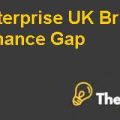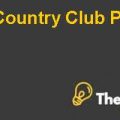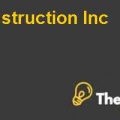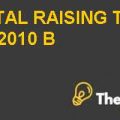
QUESTION 3:
Carry out a Discounted Cash Flow valuation on Outreach Networks that Perez could use to determine the value of the company if it accepts Everest Partners investment. Critically compare the DCF valuation with the VC methodology. What are some of the differences between a target rate under the VC method and a market-adjusted rate, such as that obtained from the Capital Asset Pricing Model (CAPM), used in carrying out a DCF Valuation.
The discounted cash flow valuation is a method under which the future cash flows for the business are projected based on certain assumptions. These are then discounted back at an appropriate weighted average cost of capital and a terminal value is also calculated based on the perpetuity value of the business in the foreseeable future. Summing up all these present values and the terminal values gives us the enterprise value of the company.
The future free cash flows have been provided in the case exhibit 1. The cash flows have been projected for 6 years from 2012 to 2017. In order to discount back these free cash flows to present value, an appropriate discount rate has been calculated. In this case, the company Outreach Networks is 100 % equity financed, therefore, cost of equity has been calculated based on the information provided in the case. The risk free rate of 5% and the return on market of around 6% is given in the case. The average of beta of the comparable companies has been used in order to calculate the cost of equity for Outreach Networks. Based on this information the future cash flows have been discounted. The terminal value has also been calculated and the terminal growth rate of 3% has been assumed in this type of industry taking a conservative approach. Also the present value of the funds that would be received has been calculated for 6 years which is $20.57 million. Adding all these present values the total enterprise value is $2743 million and $54.87 on a per share basis.
DIFFERENCES IN TARGET RATE & COST OF EQUITY
The target rate of return for a venture capital firm is the rate which measures the justifiable rate of return over the investments made by the venture capital companies. This risk incorporated the risks that are taken by the venture capitals to provide the funding to the newly set-up companies. Another difference is that the target rate of return is usually set at a very high level as compared to the traditional cost of equity of the company. Since, most of the venture capital firms invest in companies that are in their early stages and they do not have a long track record and also the future earnings prospects of the company are highly volatile, therefore, the venture capital companies perform their valuation based on the target rate of return at the planned exit date. However, the cost of equity on the other hand is used to discount the cash flows of 100% equity financed company.
QUESTION 4:
Given the high equity stake that Everest Partners is demanding, should Perez take the VC funding? Estimate the DCF valuation of Outreach if it does not receive the funding from Everest Partners, stating your assumptions. Critically analyze whether accepting the investment from Everest Partners in exchange for 30% of the equity makes sense for Perez and the other shareholders compared to choosing a go it alone approach.
The above discounted cash flow valuation for the company was performed after incorporating the present value of the investment funds received by the venture capital company. However, here the discounted cash flow valuation has been performed on the basis of the same free cash flows from 2012 to 2017. All the calculation performed here are similar to the above scenario, however, the present value of the venture capital funding has not been incorporated in the calculations performed.
The enterprise value after the incorporation of the venture capital funding is around $2743 million and without the venture capital funding the enterprise value is $2722 million. The enterprise value is higher with the inclusion of the venture capital funding; however, there is no significant increase in the wealth of the shareholders. Also, the previous calculation examined the impact of either acquiring 30% or 15% of the stake also shows that, if the owners of Everest Partners do not reduce their demand for acquiring 30% of the stake to 15% for $30 million, the CEO of Outreach Networks should not accept this offer. However, if the owners of Everest Partners still demand 30% stake in the company, then the offer should be declined and the company should operate on a go alone approach. This would be in the best interests of the company in the long term.............................................













